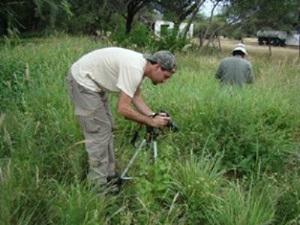Luis Volkmann
Other projects
The measurement of renewable native and exotic species, analysing the dynamics and colonization for different ambiences, the survival of native and exotic tree species after fires, and their growth and loss of biomass as a response to these continuous fires. We will analyse the relation between environmental impact and recovery of the forests in the hills.

The Córdoba hills are the most oriental ramifications of the orographic system called Sierras Pampeanas (Pampa Hills) in the Northwest of Argentina.
The vegetation of the hills can be divided in 3 principal altitude sectors:
(1) "bosque serrano" or forest of the hills, normally under 1300 m of altitude,
(2) "romerillal" or heath, between 1300 and 1600 m,
(3) the grasslands and small forests above 1600 m.
The frequent fires and the invasion of exotic vegetation species in the forests, has drastically changed the ecosystems of the lower altitudes in the hills of Córdoba, Argentina.
Every year, an alarming extension of forests and grasslands are burned in the Córdoba province, mostly of antropic origin, that produce a gradual bareness and deterioration of the environment.
The actual distribution of the vegetation would indicate that the forests of the hills are one of the most drastically reduced by human activity.
The introduction of exotics is also a serious environmental problem. Many species brought by the men who colonized this part of the country, compete with and displace the native species. In many parts of the hills the neoecosystem is characterized by the presence of exotic vegetable species (Ulmus spp., Ligustrum spp).